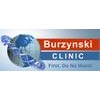Antineoplaston Therapy in Treating Patients With Ependymoma
Ependymoma

About this trial
This is an interventional treatment trial for Ependymoma focused on measuring Ependymoma, Anaplastic Ependymoma
Eligibility Criteria
DISEASE CHARACTERISTICS: Histologically confirmed ependymoma that is unlikely to respond to existing therapy and for which no curative therapy exists Evidence of residual tumor (>= 5mm) by MRI scan performed within two weeks prior to study entry No brain stem tumors PATIENT CHARACTERISTICS: Age: 6 months and over Performance status: Karnofsky 60-100% Life expectancy: At least 2 months Hematopoietic: WBC at least 2,000/mm3 Platelet count greater than 50,000/mm3 Hepatic: Bilirubin no greater than 2.5 mg/dL SGOT/SGPT no greater than 5 times upper limit of normal No hepatic failure Renal: Creatinine no greater than 2.5 mg/dL No renal failure No history of renal conditions that contraindicate high dosages of sodium Cardiovascular: No severe heart disease No uncontrolled hypertension No history of congestive heart failure No history of other cardiovascular conditions that contraindicate high dosages of sodium Pulmonary: No severe lung disease Other: Not pregnant or nursing Fertile patients must use effective contraception during and for 4 weeks after study No serious active infections or fever No other serious concurrent disease PRIOR CONCURRENT THERAPY: Biologic therapy: At least 4 weeks since prior immunotherapy and recovered No concurrent immunomodulating agents Chemotherapy: At least 4 weeks since prior chemotherapy and recovered (6 weeks for nitrosoureas) No concurrent antineoplastic agents Endocrine therapy: Concurrent corticosteroids for cerebral edema allowed (must be on stable dose for at least 1 week prior to study) Radiotherapy: At least 8 weeks since prior radiotherapy and recovered Surgery: Not specified Other: No prior antineoplaston therapy
Sites / Locations
- Burzynski Clinic
Arms of the Study
Arm 1
Experimental
Antineoplaston therapy
Antineoplaston therapy (Atengenal + Astugenal) by IV infusion every four hours for at least 12 months. Study subjects receive increasing dosages of Atengenal and Astugenal until the maximum tolerated dose is reached.
Outcomes
Primary Outcome Measures
Secondary Outcome Measures
Full Information
1. Study Identification
2. Study Status
3. Sponsor/Collaborators
4. Oversight
5. Study Description
6. Conditions and Keywords
7. Study Design
8. Arms, Groups, and Interventions
10. Eligibility
12. IPD Sharing Statement
Learn more about this trial
